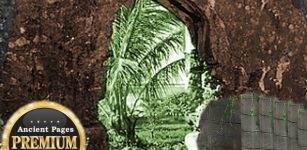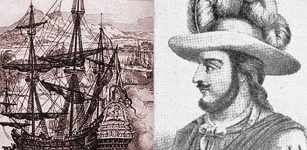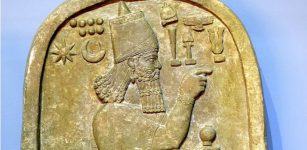Fresco Reveals Renaissance Genius Raphael Used Egyptian Blue – World’s Oldest Artificial Pigment
Jan Bartek - AncientPages.com - Ancient Egyptians understood the value of what is today known as the world’s oldest artificial pigment. Egyptian blue appeared about 5,000 years ago in a tomb painting dated to the reign of Ka-sen, the last king of Egypt's First Dynasty.
Modern scientists have discovered the Egyptian blue pigment has extraordinary properties and will enable us not only to reconstruct the past, but also possibly to shape the technological future.

Egyptian blue can be used by many experts, like for example crime scene investigators who can take advantage of it because the powder emits infrared radiation when exposed to a certain kind of light, and hopefully reveal hidden fingerprints.
A while back, researchers also announced ancient Egyptian Blue will be used to create new nanomaterial 100,000 times thinner than a human hair.
The many applications of Egyptian blue are still being investigated by scientists.
One person who understood the secrets of Egyptian blue was the great Renaissance Genius Raphael who used the artificial pigment to achieve the intense blue of the sky and sea in his famed Triumph of Galatea in Rome's Villa Farnesina, according to a new study seen by ANSA.
Raffaello Sanzio da Urbino (1483 -1520), who was simply known as just Raphael was a very talented Italian painter who was only 37 years at the time of his death.
Rafael was part of a trinity of Renaissance great master along with Michelangelo and Leonardo Da Vinci.
The life and death of the Renaissance master have been a subject of debates for a number of reasons, but recently art historians managed to solve the mystery of Rafael’s tomb by reconstructing his face.
Raphael’s Knowledge Of Egyptian Blue
After the fall of the Roman Empire, the oldest blue in history had been lost and replaced by lapis lazulli. According to this latest study, Raphael carried out a unique experiment in his workshop and used the color in the masterpiece painted onto the walls of the then luxury Palazzo Chigi.
Professor Antonio Sgamellotti of the Lincei Academy conducted a study of Raphael’s frescoes.
“ It is the first time that we find this pigment in a work by Raphael, whose use for the Galatea, not coincidentally a mythological subject, may have been born in the Urbino artist's workshop and engendered by his great interest in the ancient world,” Professor Sgamellotti explained.
According to ANSA, “The study, carried out to mark the 500th anniversary of the painter's death, will be presented at the show "Raphael in the Villa Farnesina, Galatea and Psyche", curated by Sgamellotti and by Virginia Lapenta, which will be held from October 6 to January 6, 2021 in the residence designed by Baldassarre Peruzzi and decorated by Raphael together with all the other great names in painting of his time.
The Triumph of Galatea is a fresco completed by Raphael in around 1514.

The Triumph of Galatea by Raphael. Credit: Public Domain
The Farnesina was built for the Sienese banker Agostino Chigi, one of the richest men of that age, and originally called the Villa Chigi.
The Farnese family later acquired and renamed the villa, smaller than the more ostentatious palazzo at the other side of the Tiber.
The fresco is a mythological scene of a series embellishing the open gallery of the building, a series never completed which was inspired to the "Stanze per la giostra" of the poet Angelo Poliziano.
In Greek mythology, the beautiful Nereid Galatea had fallen in love with the peasant shepherd Acis. Her consort, one-eyed giant Polyphemus, after chancing upon the two lovers together, lobbed an enormous pillar and killed Acis - Sebastiano del Piombo produced a fresco of Polyphemus next to Raphael's work.”
Written by Jan Bartek - AncientPages.com Staff Writer




















